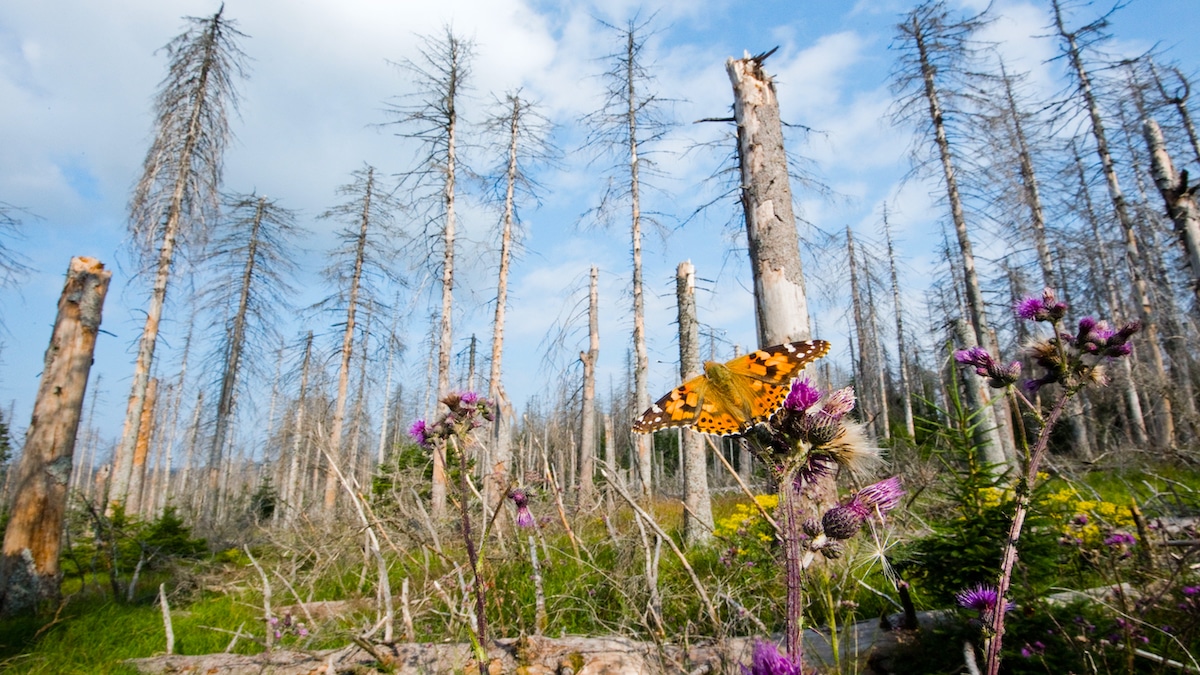

In a balanced ecosystem, every living thing plays an important role. Take away one — trees, for instance — and things start to collapse. Trees provide habitat and food for insects, birds, mammals like koalas, reptiles and other animals, as well as shade and nutrients for the soil from fallen leaves and rotting bark, not to mention the absorption and sequestration of carbon dioxide and the release of oxygen.
Insects and trees have a symbiotic relationship, and, according to American Forests, insects pollinate 80 percent of all trees.
A new study by researchers at University College London (UCL) looked at 750,000 samples of 18,000 distinct insect species and found that the combination of habitat loss caused by big agriculture and climate change are having a drastic impact on global insect populations, The Associated Press reported.
“We know insects are under threat. We’re now getting a much bigger handle on what they are threatened by and how much,” said Dr. Charlie Outhwaite with the UCL Centre for Biodiversity & Environment Research, who was the study’s lead author, as The Associated Press reported. “In this case, the habitat loss and climate change can often be worse than if they were acting on their own, as one can make the impact of the other worse and vice versa. We’re missing part of the picture if we are only looking at these things individually.”
The study was the first to pinpoint that the relationship between changes in land use and global heating was responsible for the pervasive global losses of a diverse number of insect species. The study, “Agriculture and climate change are reshaping insect biodiversity worldwide,” was published in the journal Nature.
“Many insects appear to be very vulnerable to human pressures, which is concerning as climate change worsens and agricultural areas continue to expand. Our findings highlight the urgency of actions to preserve natural habitats, slow the expansion of high-intensity agriculture, and cut emissions to mitigate climate change,” said Outhwaite, as reported by UCL.
Insects perform many roles in almost every habitat on Earth, including pollinating 75 percent of the flowering plants and 35 percent of global food crops, according to the U.S. Department of Agriculture.
“Losing insect populations could be harmful not only to the natural environment, where insects often play key roles in local ecosystems, but it could also harm human health and food security, particularly with losses of pollinators,” Outhwaite said, as UCL reported.
The researchers looked at the amount of climate warming different areas had historically experienced, as well as the intensity of an area’s agriculture when comparing the biodiversity of insects there. They found that insect numbers were 49 percent lower in areas that had considerable climate warming and high-intensity agricultural land use than they were in habitats that were the most natural and had no record of warming. In the warmer areas with more intense agriculture, there were also 29 percent fewer distinct species.
“The environmental harms of high-intensity agriculture present a tricky challenge as we try to keep up with food demands of a growing population. We have previously found that insect pollinators are particularly vulnerable to agricultural expansion, as they appear to be more than 70% less abundant in high-intensity croplands compared to wild sites,” said Dr. Tim Newbold of the UCL Centre for Biodiversity & Environment Research, who was the study’s senior author, as reported by UCL. “Careful management of agricultural areas, such as preserving natural habitats near farmland, may help to ensure that vital insects can still thrive.”
On hot days, many insects need plants to shade them from the sun. The team found that the presence of natural habitat near areas where there is significant climate warming but low-intensity agricultural land use softened the impact. In areas where natural habitat covered 75 percent of the land, insect numbers were reduced by just seven percent, whereas comparable areas that were 25 percent covered by natural habitat saw a 63 percent reduction in insect abundance.
“Our findings may only represent the tip of the iceberg as there is limited evidence in some areas, particularly in the tropics which we found have quite high reductions in insect biodiversity in the most impacted areas,” said Outhwaite, as UCL reported.
The study highlighted the outsized role insects play in the world and reinforced the fact that habitat loss threatens all species.
“We need to acknowledge how important insects are for the environment as a whole, and for human health and wellbeing, in order to address the threats we pose to them before many species are lost forever,” said joint first author Peter McCann, who conducted the research while completing an M.Sc. at the UCL Centre for Biodiversity & Environment Research, as reported by BBC News.

 233k
233k  41k
41k  Subscribe
Subscribe 